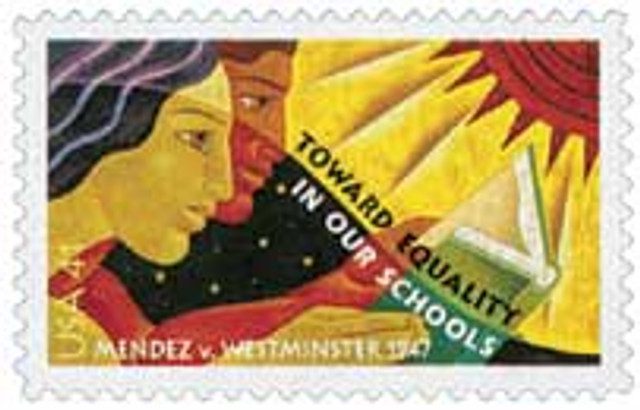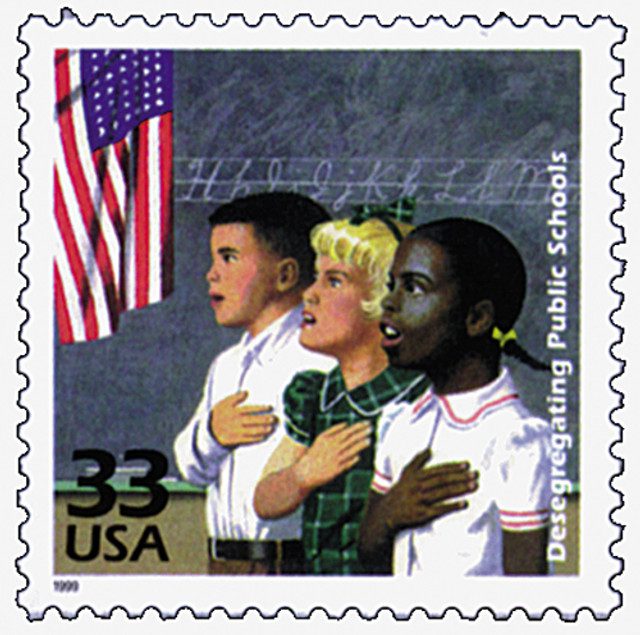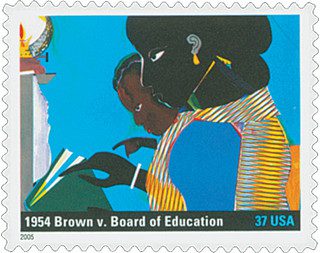Thurgood Marshall was born on July 2, 1908, in Baltimore, Maryland. He was the first African-American Supreme Court justice and served 24 years on the bench.
The great-grandson of slaves, Marshall learned about the Constitution and rule of law from his parents at an early age. His father taught him how to debate and took him to see court cases. While his father didn’t tell him to become a lawyer, Marshall said he turned him into one “by teaching me to argue, by challenging my logic on every point, by making me prove every statement I made.”
Marshall graduated a year early from Frederick Douglass High School in the top third of his class. He then went to Lincoln University. While he initially didn’t take his classes seriously, he eventually buckled down and became the star of the debate team. Marshall then went to Howard University Law School, graduating first in his class.

In 1934, Marshall began a 21-year association with the National Association for the Advancement of Colored People (NAACP). He was the first director-counsel of the NAACP Legal Defense and Education Fund.
Marshall won a series of important civil rights cases during the 1930s and successfully won 29 cases before the US Supreme Court. Based on his impressive record, the United Nations asked Marshall to help draft the constitutions of the emerging African nations of Ghana and what is now Tanzania.
For more than five decades, the US Supreme Court’s 1896 decision in Plessey v. Ferguson was a major obstacle to American civil rights activists. The plaintiff in the case was Homer Plessey, a black man who was arrested for riding in a railroad car designated for whites only. In deciding the case, the Supreme Court upheld Plessey’s conviction and established the doctrine of “separate but equal.” Segregation was lawful, according to the highest court in the land, as long as each group had equal access to services such as public transportation.

Marshall successfully challenged the “separate but equal” principle in the 1954 case, Brown v. Board of Education. By persuading the US Supreme Court that there could be no equality when determinations were based solely on skin color, Marshall laid the foundation for desegregation in America.
President Lyndon Johnson appointed Marshall the first black solicitor general of the United States in 1965. Two years later, when Supreme Court Associate Justice Tom C. Clark was retiring, President Johnson appointed Marshall to fill his seat. The president proclaimed, it was “the right thing to do, the right time to do it, the right man and the right place.” Marshall’s nomination was controversial at the time and caused a heated debate in the Senate. But on August 30, the Senate confirmed his nomination by a vote of 69 to 11. He was sworn in two days later, making history as the first African American in the nation’s highest court.
During his 24 years as a justice, Marshall fiercely challenged discrimination of all kinds and fought against the death penalty. He also supported the rights of criminal defendants as well as women’s right to abortion. During Marshall’s tenure he contributed to other areas of law including fair representation, securities law, and the savings and loan crisis. According to Marshall, his political philosophy was to “do what you think is right and let the law catch up.” His conservative opponents criticized this as a form of judicial activism. By 1991, Marshall’s liberal ideals left him in the minority amongst a largely Republican-led government, which led to his retirement. He died just two years later on January 24, 1993. Later that year, he was posthumously awarded the Presidential Medal of Freedom.
Find a collection of Marshall’s papers at the Library of Congress.
| FREE printable This Day in History album pages Download a PDF of today’s article. Get a binder or other supplies to create your This Day in History album. |
Discover what else happened on This Day in History.






A Great American in every aspect of his work and the finest of all Justices. It’s too bad that his father’s words – PROVE IT – doesn’t seem to apply in today’s world. Come on everyone, repeat after me, “the TRUTH shall set you FREE”.